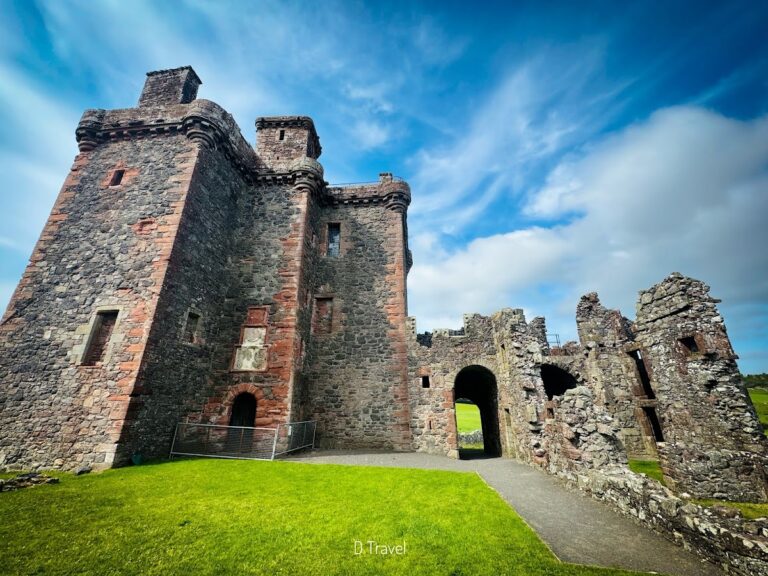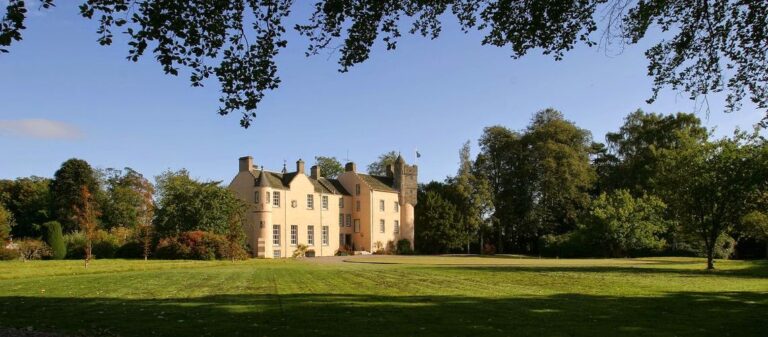Scone Palace: Historic Scottish Coronation Site and Ancestral Home
Visitor Information
Google Rating: 4.6
Popularity: Medium
Google Maps: View on Google Maps
Official Website: scone-palace.co.uk
Country: United Kingdom
Civilization: Unclassified
Remains: Military
History
Scone Palace is situated near the village of Scone, close to Perth in Scotland, within the United Kingdom. The site has deep historical roots linked to early Scottish civilization and Christian religious foundations.
From at least the 9th century, this location served as the traditional site for the coronation of Scottish kings. It is closely associated with the Stone of Scone, also called the Stone of Destiny, upon which numerous monarchs, including Kenneth MacAlpin in the early medieval period, Robert the Bruce who was crowned in 1306, and Charles II in 1651 during his reign, were crowned. In addition to its royal connections, the site hosted the first known Scottish Parliament under King Constantine II around the year 906, marking its importance in early Scottish governance.
Originally, the location featured an early Christian church and later became the site of an Augustinian priory known as Scone Abbey, established in 1114. This religious institution stood for several centuries until its destruction in 1559 during the Scottish Reformation, when a mob incited by the reformer John Knox attacked and demolished the abbey buildings. The dismantling of the abbey marked a significant transition in the site’s use and ownership.
Following the abbey’s ruin, the lands were granted in 1580 to Lord Ruthven but were later confiscated by King James VI in 1600. The king then transferred the estate to Sir David Murray, who became Lord Scone. The Murray family has maintained the palace as their ancestral home for over four centuries, forging a long-standing connection with the site.
Between 1802 and 1807, the palace underwent extensive remodeling and expansion under the direction of architect William Atkinson. Commissioned by David William Murray, the 3rd Earl of Mansfield, this work aimed to modernize the late 16th-century palace while retaining elements reminiscent of the site’s medieval Gothic abbey heritage. The landscape of the palace grounds saw improvements in the 19th century, including significant work by the renowned landscape gardener John Claudius Loudon. Further enhancements were made in 1842 in preparation for the visit of Queen Victoria and Prince Albert.
Remains
The current Scone Palace is constructed predominantly of red sandstone, featuring battlemented (castellated) roofs that reflect the Gothic Revival architectural style popular in Scotland. This design integrates preserved medieval Gothic characteristics that date back to the original late 16th-century structure, maintaining continuity with the site’s historical roots.
Within the palace, the gallery and state rooms house extensive collections highlighting the family’s aristocratic heritage. These include finely crafted Rococo chairs by Pierre Bara, and original furniture by noted designers such as Robert Adam and Thomas Chippendale. The art collection showcases significant Scottish and British portraiture from artists like Reynolds, Allan Ramsay, Philip de László, and a key work by Sir David Wilkie titled “The Village Politicians.” Among the palace’s treasured artifacts is a writing desk by Jean-Henri Riesener, a gift from Marie-Antoinette to the 2nd Earl of Mansfield. The Lennox Room contains royal artifacts, including bed-hangings crafted by Mary Queen of Scots.
The palace grounds encompass several historically significant features. Moot Hill, also known as Boot Hill, is a traditional Scottish inauguration site where monarchs were crowned. It holds a replica of the Stone of Scone, symbolically connecting the landscape to the kingdom’s coronation ceremonies. Nearby lies a 17th-century chapel featuring remarkable monuments crafted by the Flemish sculptor Maximilian Colt, specifically commemorating the first Lord Scone and the heart of the first wife of the 2nd Earl of Mansfield.
Surrounding the palace are woodlands with fir trees estimated to be over 250 years old. Significantly, these grounds were the first location in Britain to cultivate Douglas firs, introduced to the area by the botanist David Douglas. Among the landscape’s notable features is an expansive star-shaped maze covering 1,600 square meters. This maze is formed by carefully planted copper and green beech trees arranged to replicate the Ancient Murray of Tullibardine tartan, designed in the pattern of a five-pointed star as part of the Mansfield family’s emblematic identity.










